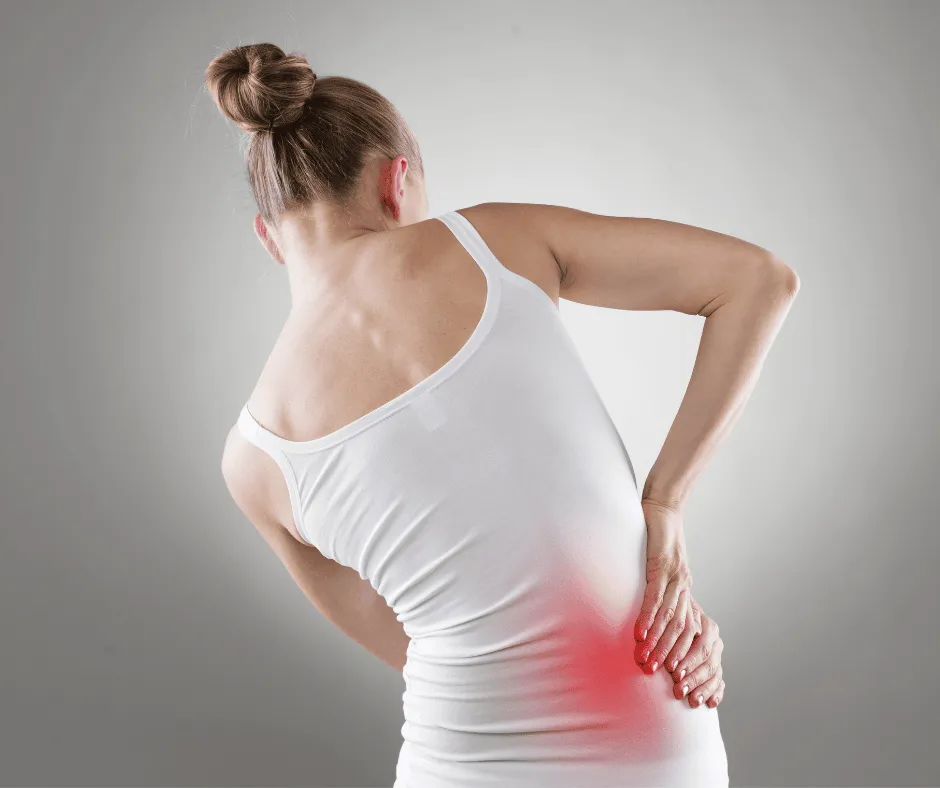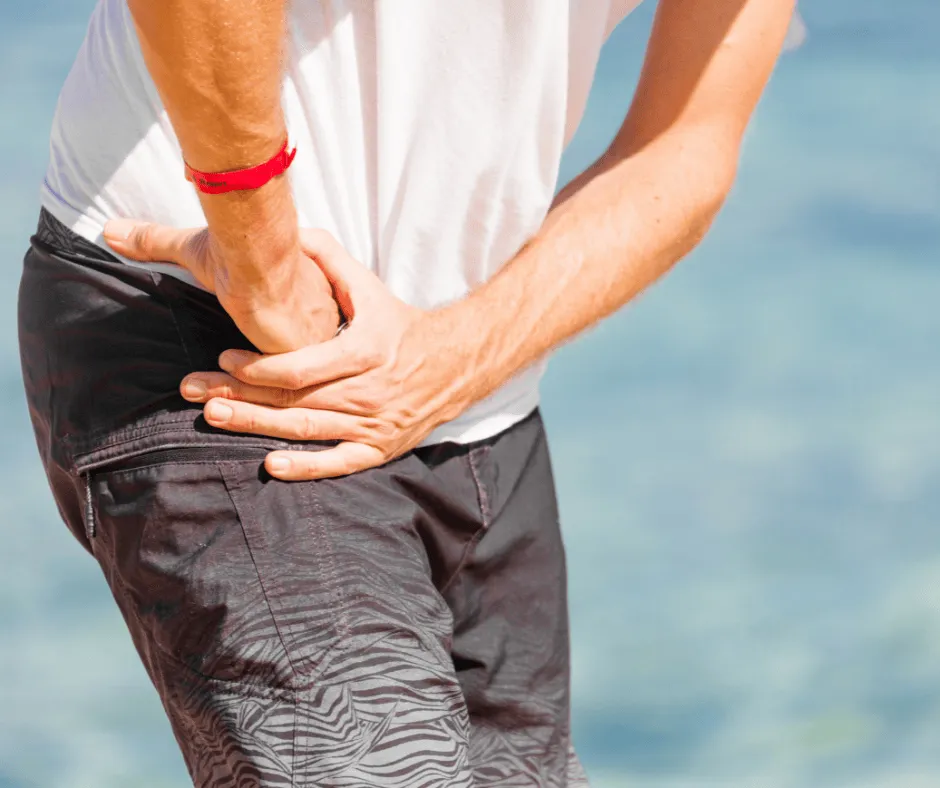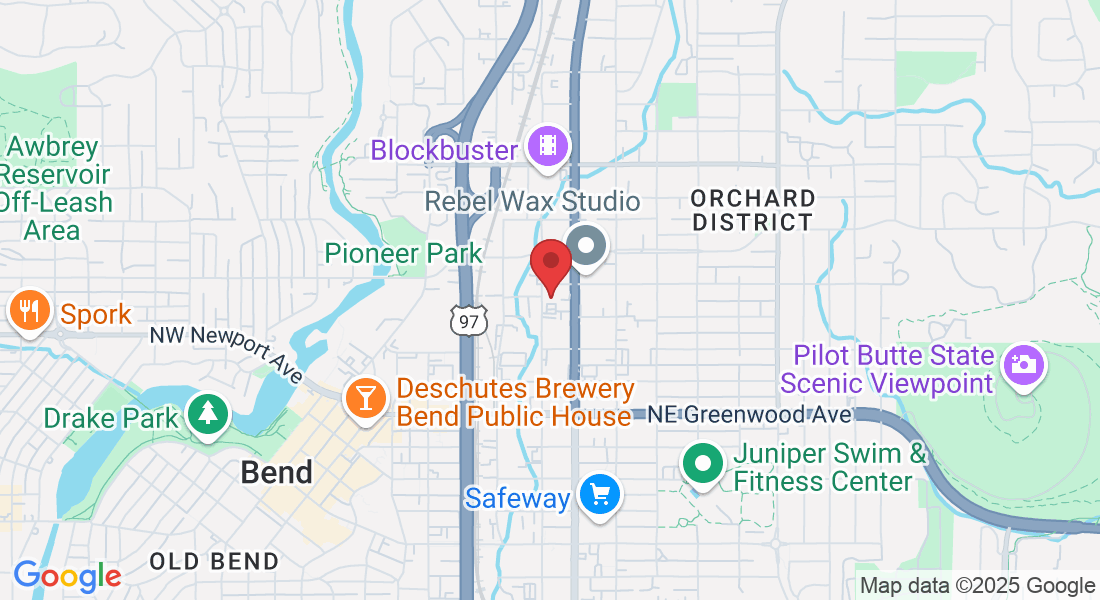Hip Pain Relief
Rediscover a Life Untroubled by Hip Pain
Diagnosing hip discomfort can be complex due to the joint's multifaceted connection to bones, muscles, ligaments, and other tissues. Pain in the groin or inner hip may signal an issue within the hip, while discomfort in the upper thigh, outer buttock, or hip's outer area often implicates surrounding soft tissues. Sometimes, what appears as hip pain may actually originate from elsewhere, like the lower back.
At PhysioFit, we're dedicated to providing specialized hip pain solutions, individually tailored to meet the unique needs and conditions of each patient. We apply a scientific, fitness-oriented approach to physical therapy, focusing on personalized care paths towards relief. Our mission goes beyond just easing your hip pain; we aim to improve your overall well-being, mitigate the risk of persistent or long-lasting discomfort, and facilitate a quick recovery to your regular activities.
What You Should Know
The hip, a sturdy ball-and-socket joint, enables a wide range of movement. The ball, at the top of your thigh bone, fits neatly into a hollow socket in your pelvis, contributing to the joint's impressive mobility.
A network of muscles and tendons encase the hip joint, forming a protective capsule. This support system bolsters joint movement and contributes to leg and upper body motion.
The synovium within the capsule lubricates the joint with synovial fluid and sustains the cartilage health. This cartilage buffers the hip joint bones, minimizing friction and impact during motion. This well-structured support mitigates hip dislocation, even during high-impact injury scenarios.
A proper diagnosis of a hip problem involves a thorough evaluation from a professional.

What Really Causes Hip Pain?
The cause of hip pain can vary considerably, stemming from various injuries or health conditions. The nature and severity of the pain often offers clues to its underlying cause.
Tendonitis - Inflamed Tendons: The most frequently encountered source of acute hip pain is inflamed tendons, known as tendonitis. This inflammation generally results from excessive physical activity and while it can be quite painful, it typically subsides within a few days.
Arthritis - A Persistent Pain Culprit: Long-term hip pain is predominantly caused by arthritis, a condition characterized by painful, stiff, and tender joints that can impede normal mobility. Several forms of arthritis can affect the hip:
Osteoarthritis (OA): The wearing down of protective joint cartilage due to age or use often results in osteoarthritis.
Traumatic Arthritis: A joint injury, like a fracture, may trigger this condition, which mirrors osteoarthritis.
Infectious Arthritis: This occurs when an infection in the joint leads to cartilage destruction.
Rheumatoid Arthritis (RA): This autoimmune condition, where the body's immune system attacks the joints, may cause extensive damage to joint cartilage and bones over time.
Of these, osteoarthritis is far more prevalent than rheumatoid arthritis.
Trochanteric Bursitis - Inflammation Near the Hip Joint: Hip pain may also be attributed to trochanteric bursitis, a condition that arises when the bursa, a fluid-filled sac near the hip joint, becomes inflamed. This inflammation can be triggered by hip injury, joint overuse, or postural issues. Moreover, other conditions such as RA can also lead to hip pain, with women being more prone to this condition.
Hip Fractures - Sudden, Severe Hip Pain: Hip fractures, often seen in older adults or individuals suffering from osteoporosis (a condition that weakens bones), present as sudden, intense hip pain. They necessitate immediate medical attention due to potential complications, such as leg blood clots.
A hip fracture usually demands surgical intervention followed by physical therapy to aid recovery and restore normal mobility.
If any of this information resonates with your current situation, we urge you to schedule an appointment with us immediately. Don't let hip pain diminish your life quality - allow us to help you embark on the path to relief today.
Safeguarding Your Hips: Essential Tips to Prevent a Hip Injury
Your hip, a critical joint supporting your body weight during movements, requires utmost care for a pain-free life. By adopting certain habits, you can reduce wear and tear, minimize osteoarthritis risk - a leading cause of hip replacement - and uphold a high-quality life. Here are concise yet insightful tips to keep your hips injury-free:
Healthy Weight Maintenance: It's vital to maintain a weight within a healthy range. The hip bears forces up to 3-6 times body weight, meaning reduced weight equals less pain. Balance regular exercise with a nutritious diet to keep joints healthy.
Good Posture: Your everyday posture significantly impacts your joints. Develop habits like sitting with straight back, feet flat, legs uncrossed, and evenly distributing weight while standing to minimize stress on your hip joints.
Sleep Posture: Optimize your sleeping position to alleviate joint stress. If you're a side sleeper, try using pillows between knees or under your hip for support. Back sleepers should put a pillow under the knees for better spine alignment.
Comfortable Footwear: Wear shoes with proper cushioning and arch support to absorb shocks and reduce joint strain. Seek advice from footwear experts if in doubt.
Proper Warm-Up and Stretching: Prioritize warming up before exercise and stretching afterwards to boost blood flow and flexibility, reducing hip injury risk.
Resistance Training: Add functional resistance exercises like squats, lunges, and step-ups to your routine twice or thrice a week to enhance hip and leg muscle strength, promoting hip stability and reducing osteoarthritis risk.
Modify Exercises: Adapt your workout regime as you age. Vary activities to avoid repetitive injuries and consider isometric exercises if regular movements cause pain. Listen to your body and adjust accordingly.
By integrating these tips into your lifestyle, you're more likely to maintain healthy hips and avoid surgical interventions.

Common Symptoms of Hip Pain
Presence of inflammation or a reddish hue in your hip
Discomfort in your groin, buttocks, or thigh area
Sensing rigidity when mobilizing your hip
Challenges in maneuvering your hip
Experiencing intense pain radiating down one side of your body (from the buttock extending down the leg)
Experiencing a clicking, snatching, popping, or scraping feeling in your hip
Remember, if you resonate with any of the symptoms or conditions mentioned, we highly recommend making an appointment with us for a thorough evaluation and personalized treatment plan.
Please Note: The information provided on our website is intended for general education and is not a substitute for professional medical advice. Each individual's situation and body is different. Therefore, what may work for one person may not work for another. We care about your well-being and advise you to reach out to us to discuss your specific needs before implementing any advice from our website.
Your Source for All Things Physical Therapy in Bend Oregon
The PhysioBlog

Flexion-Intolerant Lower Back Pain in CrossFitters
Understanding Flexion-Intolerant Low Back Pain in Functional Fitness
Flexion-intolerant low back pain (FILBP) is a prevalent issue among individuals engaged in functional fitness activities, including CrossFit. This condition is characterized by discomfort or pain during movements that involve bending forward at the lumbar spine. Exercises such as deadlifts, kettlebell swings, rowing, toes-to-bar, burpees, and devil's presses, which require significant lumbar flexion, can exacerbate symptoms.
Mechanisms Behind Flexion Intolerance
The lumbar spine's intervertebral discs are particularly susceptible to flexion-related stress. Repeated or sustained forward bending increases pressure on the anterior portion of these discs, potentially leading to disc herniation or bulging. This can irritate adjacent nerve roots, resulting in pain that may radiate to the buttocks or legs, commonly known as sciatica. Individuals with FILBP often experience heightened discomfort during activities involving forward bending and may find relief in positions that promote lumbar extension. However, while stretches like the "prayer stretch" may provide temporary relief, they can potentially exacerbate the problem by repeatedly placing the lumbar spine in a flexed position, which may aggravate underlying issues over time.
Common lumbar extension exercises that may provide relief include the "cobra" pose, repeated cobra movements, and the backward phase of a Glute-Ham Developer (GHD) sit-up. These exercises encourage spinal extension, which can help alleviate pressure on affected discs and reduce pain.
Impact on Functional Fitness and CrossFit
Functional fitness and CrossFit routines frequently incorporate high-repetition, high-intensity movements involving lumbar flexion. For example, a typical workout might include a sequence of 21 kettlebell swings, 15 toes-to-bar, and 9 deadlifts performed in rapid succession. While this workout can be effective for increasing fitness in individuals without FILBP, it can place significant stress on the lumbar spine for those with this condition. When executed with improper form or under fatigue, such routines may provoke increased symptoms in the back or legs.
Conclusion
FILBP presents a significant challenge for individuals participating in functional fitness and CrossFit. Consulting with a physical therapist who understands weightlifting and CrossFit, and modifying workouts to reduce lumbar flexion, can be effective steps toward managing symptoms and maintaining fitness goals. Understanding the underlying mechanisms and recognizing the impact of specific movements on the lumbar spine are crucial steps toward effectively addressing this condition.
If you're experiencing any of these symptoms and cannot resolve them, give us a call to see how we can help
Copyright PhysioFIT 2025 . All rights reserved


